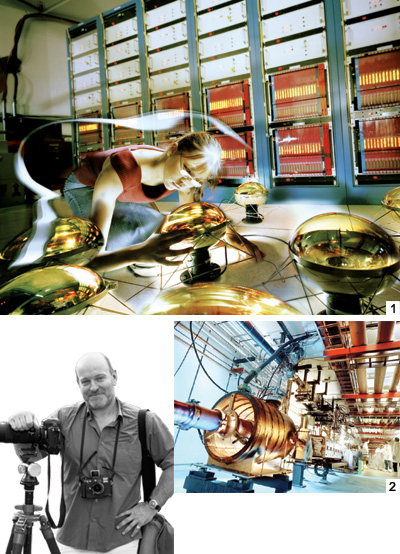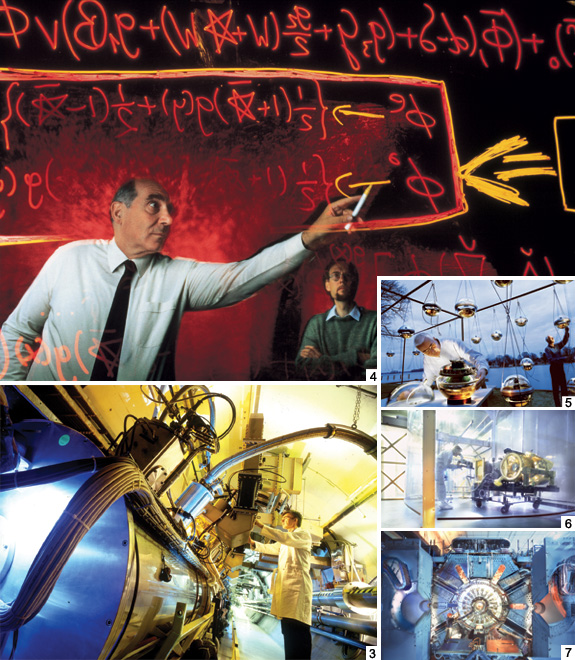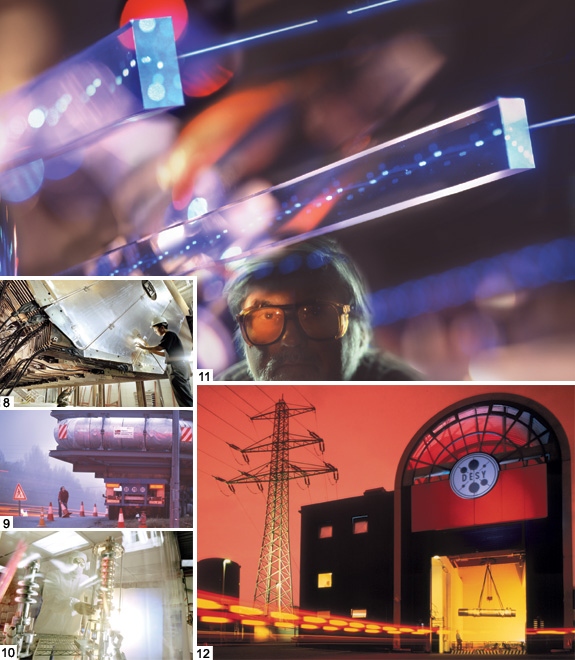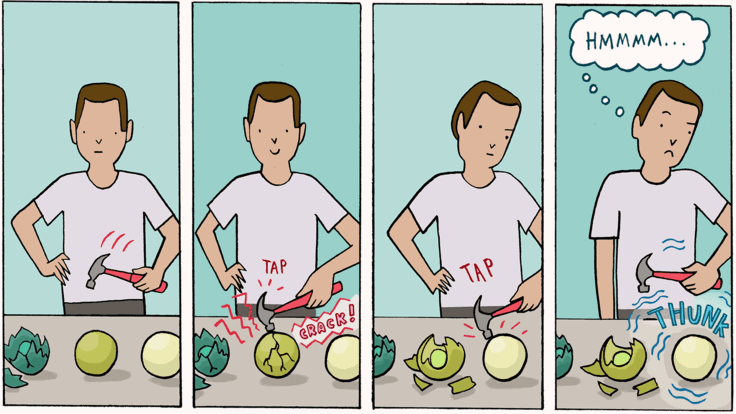|
Fermilab - Image 1: A summer student working on the MiniBooNE experiment inspects a photomultiplier tube used to detect light from neutrino interactions. Image 2: The Main Injector accelerates protons and antiprotons and transfers them to the Tevatron, the world’s most powerful particle collider. |
Visions of particle physics
Photography by Peter Ginter
Physicists and scientists of other disciplines around the world have created countless research sites that remind me of the colossal dimensions of ancient temples, in one way; and, in another, of fragile, beautiful little altars where they orchestrate experiments, with research objects largely invisible to the human eye. For example, the four new Large Hadron Collider (LHC) experiments currently being built at CERN, in Geneva, Switzerland, look like mind-boggling underground cathedrals, dug 100 meters or so under the Swiss mountains, where a sacred cast of extremely intelligent, but quite often shy, scientists are seeking the seemingly unnecessary. I am drawn to their research-caves not only by their unmatched beauty and complexity, but also by the opportunity to observe and interpret with a camera how these people have completely dedicated their lives to conquer the last frontiers in a universal group effort.
Here is where I can find a true "family of man," where representatives of virtually all races around the globe work together feverishly in order to succeed. Above ground, I sometimes cover tragic conflicts, such as religious strife in Egypt, the struggle for survival in the gang-ridden slums of Manila, or the struggle for independence in West Papua.
Here, in these pages, I portray the scientific "family of man" in its environs. Shooting physics labs and creating a substantial body of photographic work for individual organizations has helped these institutions improve their public face and communication. Their research seems impossible without the support of the public as well as the political decision makers, the decisive group for funding research. To me, it has become terribly important to build as many bridges as possible between these two worlds—here, the family of science; there, the public and policymakers—which have been wary of each other, and at times mutually suspicious and even hostile. To be such a communicative link between these two worlds is a satisfying feeling, not to mention a lifelong self-educating endeavor.
|
|
|
CERN DESY SLAC |
|
|
|
Fermilab CERN SLAC DESY |
Click here to download the pdf version of this article.









